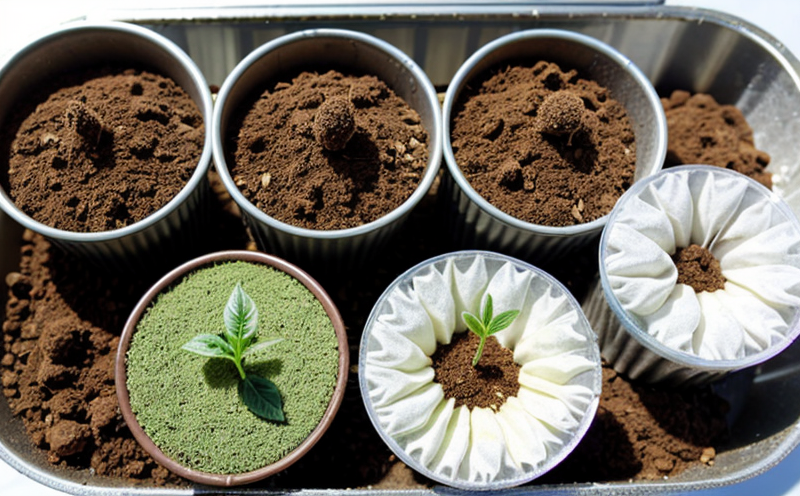Tetrazolium Viability Testing in Seeds
The Tetrazolium Viability Testing method is a widely recognized procedure used to assess seed viability and germination potential. This technique, often referred to as the tetrazolium test or TTC (Tetrazolium Tetrazene Compound) test, has been validated by international standards such as ISO 6392-1:2008 for seeds of agricultural importance.
The process involves staining seed coats with a solution containing tetrazolium salts. This compound reacts with dehydrogenases within living cells, leading to the formation of formazan—a purple-blue dye that indicates healthy tissues and viable cells. The test is non-destructive and allows for quick evaluation without compromising the integrity of the seeds.
Understanding seed viability is critical in agriculture and forestry as it directly impacts crop yield, planting success rates, and overall resource allocation efficiency. By ensuring only viable seeds are planted, farmers can reduce waste, enhance productivity, and optimize the use of water, soil nutrients, and other resources.
The Tetrazolium Viability Testing method is particularly useful for evaluating germination potential under controlled conditions, which helps in selecting high-quality seed lots for planting. This test also assists quality managers in making informed decisions regarding seed procurement and storage to maintain optimal viability levels.
For R&D engineers, this testing ensures that new varieties or improved strains of seeds are evaluated based on their inherent biological characteristics, rather than external factors. For compliance officers, it provides a means to verify adherence to regulatory standards related to seed quality assurance.
The test can be performed using various instruments and apparatus, including microscopes for precise observation under controlled lighting conditions. The process typically involves the following steps:
- Preparation of seeds by washing and drying them to remove any impurities or excess moisture.
- Dissolving tetrazolium salts in a suitable solvent (usually water).
- Applying the solution to the seed coats using appropriate techniques like dipping, spraying, or immersion.
- Observing the formation of formazan within 24-72 hours under a microscope. The intensity and distribution of color can vary based on the degree of viability.
The results are then analyzed to determine the percentage of viable seeds, which is crucial for planning planting schedules and optimizing resource allocation.
| Parameter | Description | Acceptance Criteria |
|---|---|---|
| Seed Viability | The proportion of seeds that stain blue-violet with tetrazolium salts, indicating viable cells. | A minimum of 80% viability is generally acceptable for agricultural purposes. |
| Time to Germination | The duration it takes for germinated seeds to exhibit root growth. | Seeds should begin showing signs of germination within a specified time frame as per the test protocol. |
This method is essential for ensuring that only high-quality seeds are planted, thereby enhancing crop yields and reducing environmental impact. It supports sustainable agricultural practices by optimizing resource use and improving overall productivity.
Why It Matters
The importance of Tetrazolium Viability Testing in Seeds cannot be overstated, especially given the increasing demands for food security and sustainability in agriculture and forestry. By ensuring that seeds are biologically viable before planting, this testing method helps to:
- Reduce crop losses due to non-viable seeds.
- Optimize resource allocation by planting only high-quality seeds.
- Promote sustainable agricultural practices through efficient use of water and soil nutrients.
- Aid in the development of new seed varieties that can withstand environmental stressors.
For compliance officers, this testing ensures adherence to regulatory standards related to seed quality assurance. For R&D engineers, it provides a means to evaluate new seed strains based on their inherent biological characteristics. By incorporating Tetrazolium Viability Testing into standard operating procedures, organizations can significantly improve the efficiency and effectiveness of their agricultural operations.
Scope and Methodology
| Parameter | Description | Acceptance Criteria |
|---|---|---|
| Seed Type | Includes agricultural seeds like maize, wheat, rice, and various legumes. | Variety-specific standards may apply for certain crops. |
| Temperature Control | Maintain a controlled temperature of 25°C ± 1°C during the testing period. | Ensure accurate monitoring to avoid affecting test results. |
| Lighting Conditions | Use low-intensity light or darkness for optimal formazan formation observation. | Avoid direct sunlight as it may alter the color reaction. |
The process begins with seed preparation, ensuring they are free from contaminants and at a consistent moisture level. Tetrazolium salts are dissolved in water, and seeds are treated according to standardized protocols. The formazan formation is observed under controlled conditions over 24-72 hours.
Accurate observation of the formazan color intensity helps determine seed viability. This method allows for a non-destructive assessment that preserves the seeds' integrity for potential future use or further testing.
Benefits
- Enhanced Crop Yield: By ensuring only viable seeds are planted, farmers can expect higher yields and better crop performance.
- Resource Optimization: Efficient resource allocation leads to reduced water usage, minimized soil nutrient depletion, and lower overall costs.
- Sustainable Practices: The use of high-quality seeds supports sustainable agricultural practices by optimizing environmental impact.
- Innovation Support: R&D engineers can test new seed strains based on their inherent biological characteristics, leading to improved crop varieties.
- Compliance Assurance: Tetrazolium Viability Testing ensures adherence to regulatory standards related to seed quality and germination potential.
- Data Quality: Accurate results provide reliable data for decision-making processes, enhancing overall operational efficiency.
- Cost Efficiency: By reducing waste from non-viable seeds, organizations can save on production costs and improve profitability.
The method also supports sustainable practices by optimizing resource use and promoting better crop performance. This testing ensures that only high-quality seeds are used, thereby enhancing overall productivity and sustainability in agricultural operations.





